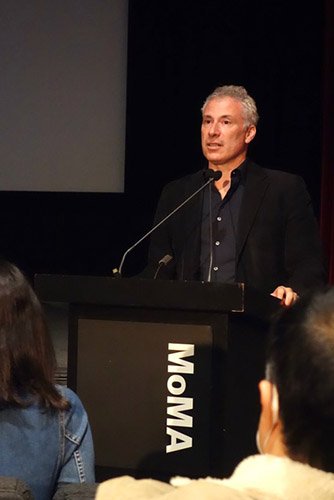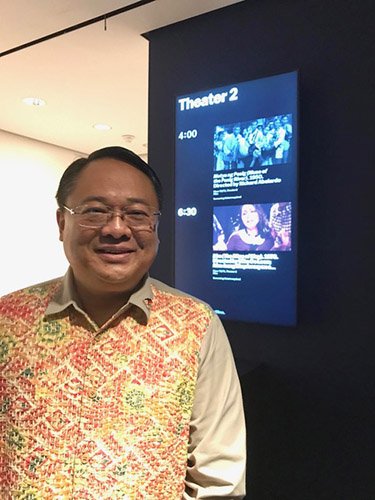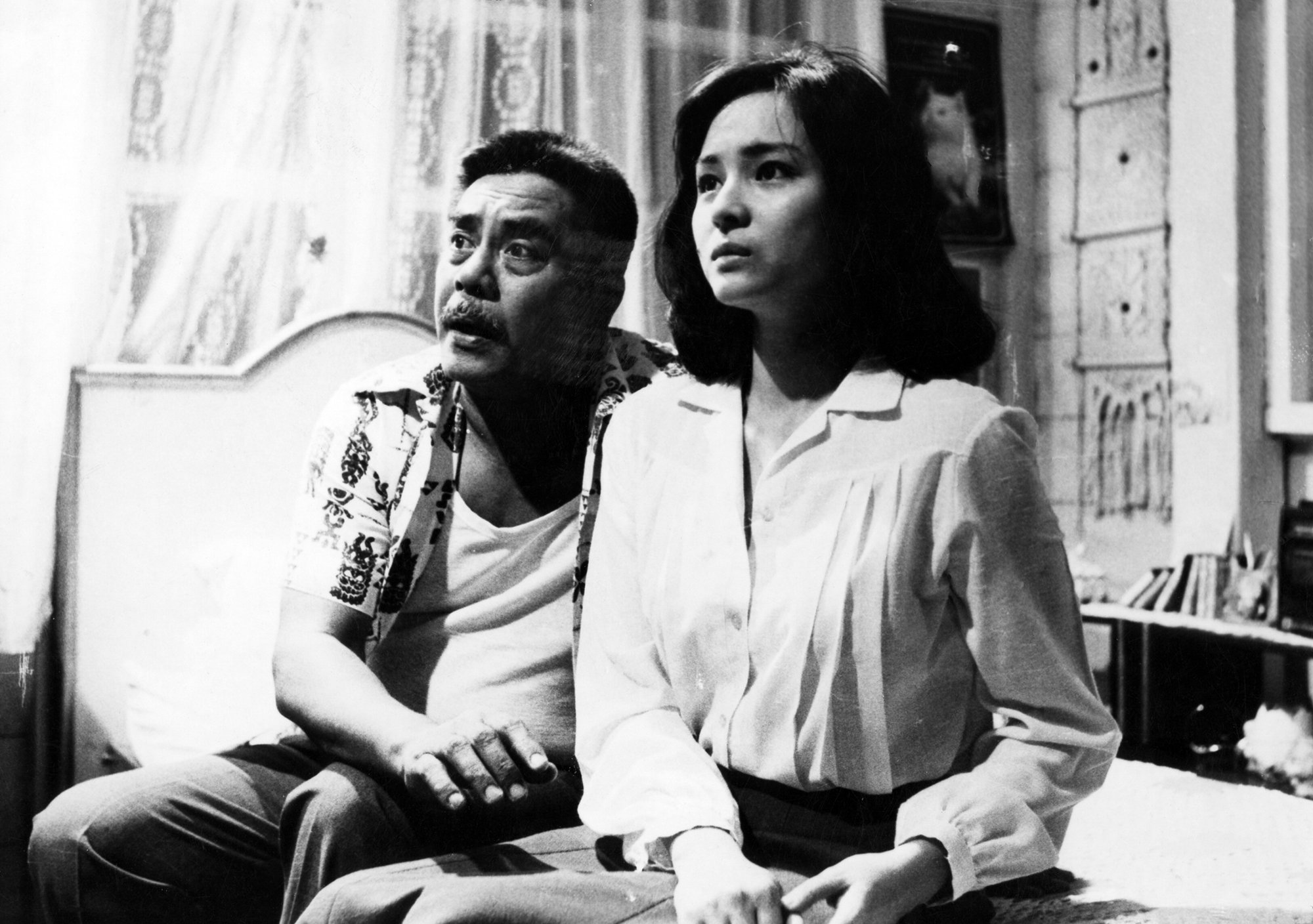Film Giant Mike De Leon at the MoMA
/Mike De Leon directing itim (From Itim: Isang Eksplorasyon sa Pelikula (Itim: An Exploration in Cinema). 1976. Philippines. Directed by Clodualdo (Doy) del Mundo, Jr. Photo courtesy of Mike De Leon)
Mike De Leon’s initial foray into filmmaking was in Lino Brocka’s Maynila, Sa Mga Kuko Ng Liwanag (Manila in the Claws of Light) in 1975 where he was the producer and cinematographer. The first full-length movie he directed was Itim (The Rites of May) in 1976, and many jewels followed, like Kisapmata (In the Blink of an Eye) in 1981, Batch ’81 in 1982, Sister Stella L. in 1984, and the more recent Citizen Jake, in 2018 – many of which have received accolades in the Philippines and abroad. His work demonstrates versatility of genre from drama to comedy, and he never shies away from using film as an expression of his political grievances.
Maynila sa mga kuko ng liwanag (Manila in the Claws of Light). 1975. Philippines. Directed by Lino Brocka. Cinematography by Mike De Leon. (Photo Courtesy of Mike De Leon)
De Leon was born into the industry. The De Leon family owned LVN Pictures, one of the Philippines’ leading film studios. This family connection is the reason the retrospective includes a few surviving LVN films from the 1930s-1960s like Mutya ng Pasig (Muse of the Pasig River), giving us a glimpse of movies produced in that era and showing how they were influential in De Leon’s career. In effect, it is not only the first time for a Filipino filmmaker (De Leon), but also the first time for a Filipino studio (LVN Pictures) to have a retrospective at the MoMA.
Josh Siegel, curator in MoMA’s Department of Film, conceived the retrospective. Relates Siegel: "I became intrigued by the films of Mike De Leon when I saw Lino Brocka’s Maynila, Sa Mga Kuko Ng Liwanag. I sought out his own films as a writer-director and was only able to track down Kisapmata and Batch ‘81 in poor copies. Nonetheless I was hooked — here was a major filmmaker in need of (re)discovery outside the Philippines. When I then learned from Gil Quito, a co-screenwriter of Itim, that Mike’s extraordinary debut feature was premiering in a new restoration at Cannes, I reached out to Mike about a complete retrospective at MoMA.”
Josh Siegel, Curator, MoMA Department of Film. (Photo by Claire Mercado-Obias)
Quito, a New York-based proponent of Philippine cinema, says, “Josh would reach out to me whenever he had Philippine films in his programs, and I would help him hustle up interest among the New York area Phil Am community.” Quito was also instrumental in introducing Siegel to De Leon.
“It didn’t surprise me when Josh settled on Mike for a first-ever MoMA retrospective on a Philippine filmmaker,” says Quito. “First of all, Mike’s output, though not as prolific as those of most other directors, is marked by unusual integrity and excellence. Secondly, most of Mike’s films had already been restored, a number of them by L’Immagine Ritrovata, with whom Mike first worked during the restoration of Manila (in the Claws of Light).”
Restoration and film preservation are among the challenges faced in programs like this. Before each film, disclaimers are flashed, like “The original negatives are lost. What remains is a print that could not be used because the film is extremely faded” or “The image is printed from the last remaining copy of the Cultural Center of the Philippines.”
Quito further explains, “Negatives and prints were decaying due to humidity, apathy, and lack of archival facilities. Many of the film rolls inside their cans were congealing into stone or vinegar-smelling blobs. Some rare films were being melted to extract the silver and others were being recycled into torotots (tooting horns) sold for New Year’s Eve.”
Yet, Quito is optimistic, saying, “The situation has changed since then and, however scattershot, groups like the Philippine Film Archives, the NCCA (National Commission for Culture and the Arts), the FDCP (Film Development Council of the Philippines), and ABS-CBN’s Sagip Pelikula have been rescuing and restoring key works, artistic and commercial, of the fraction that has survived. Mike, always the outlier, just went straight to the world’s best restoration house.”
The first two weeks of the retrospective was well attended, mostly by Filipinos based in New York and neighboring states, and a smattering of curious foreigners. Elmer Cato, the Consul General of the Philippines in New York, was present on the first day. He proudly says, “This is a good opportunity to showcase our culture through film. It shows the link of the Americans with the Philippines and reconnects the younger generation to our culture.”
Elmer Cato, the Consul General of the Philippines in New York, attended the opening day. (Photo by Claire Mercado-Obias)
De Leon could not personally come but sent a message read by Siegel on opening night. He says, in part: "I am very grateful to show the first complete retrospective of my films in the US alongside some of the surviving classics produced by LVN Pictures, my Lola Sisang’s movie studio, at the Museum of Modern Art. Specifically, I am thankful to Josh Siegel for working with me persistently over a year to this realize this month-long program.
“To help you understand the connection between the different generations of films, allow me to quote an excerpt from my upcoming book, Last Look Back: ‘I don’t think it’s presumptuous to say that my cinematic pedigree (to borrow a term from dog breeding in my dog breeding days) goes back to my grandmother’s and father’s legacy and their films that remain close to my heart. That is the only way I know to express this emotional continuum that runs deeply through every one of the films I produced, photographed, co-written, and directed.’
“In compiling materials for the book and revisiting these LVN classics in a way for the last time, I discovered some uncanny parallels between some LVN films and mine, particularly Mutya ng Pasig and Itim: a few plot elements, visuals, and themes. Such similarities and connections could not have resulted merely from my early immersion in movies. They come from somewhere deeper — through the bloodline. As I say in the book, ‘Biologically, I owe my life to Lola/Grandma Sisang and my parents Manuel and Imelda. But as for my life in cinema, I owe it all to LVN.’
“The opportunity to show a retrospective of my work at MoMA interwoven with the films of LVN, means something more primal than political to me. As the last cinema heir of the family, it’s strange to imagine what the future might hold during these disturbing times and after giving my family’s legacy one last, hard look. All I can hope is that you, the audience, find much to cherish in looking back with me on the cinematic evidence of my family’s life in the movies."
According to Quito, “Aside from the retrospective, Mike has been working for the past four years on his book of memoirs, Last Look Back, about LVN and his life in the film industry. It’s set to launch in two volumes on December 10 at the University of the Philippines.” [Ed note: On the Casa Grande Vintage Filipino Cinema Facebook page, November 15, Mike de Leon announced that he is cancelling the book launch and all preorders for the book due to many defective copies. See full statement below.]
De Leon’s work continues to be an inspiration to many, including Filipino filmmaker and actress Isabel Sandoval who had the honor of introducing the film Kisapmata. She says, "Mike De Leon is an altogether different supernova in his own right especially in the ‘70s and ‘80s.
Kisapmata (In the Blink of an Eye). 1981. Philippines. Directed by Mike De Leon. (Photo courtesy of Mike De Leon)
Full support from the Filipino community during opening night with MoMA Curator Josh Siegel (second from left) and “Itim” co-writer Gil Quito (fourth from left). (photo courtesy of Gil Quito)
“Some of his films have defined what we know as contemporary Philippine cinema. From Itim to works like Batch '81, Kakabakaba Ka Ba?, and of course, what I consider to be his masterpiece Kisapmata. I think this was made in the final year of Martial Law in the Philippines. It had its world premiere at the Metro Manila Film Festival in 1981. It's one of the films I would credit for my bourgeoning interest in arthouse and world cinema. And it’s also a very unusual Filipino film in terms of the mainstream output at that time.
“But Mike De Leon and especially Kisapmata had a very idiosyncratic and brazen sensibility. There was an economy and a seeming simplicity and straightforwardness. And if I had to describe the feeling of watching this film for the first time, it’s being throttled; being strangled in the neck for a good ninety-five minutes. It’s a great film in that it very powerfully distills and articulates the feeling of suffocation, and paranoia, and claustrophobia. And taking that feeling to its inevitable conclusion. That is what I think Filipinos at that time also felt viscerally about the situation of the Philippines in the final years of the Marcos regime."
The audience at the screening of “Kisapmata”. (Photo courtesy of Gil Quito)
Siegel offers the reason he was drawn to De Leon’s work: "Mike is an extraordinarily exacting craftsman, as brilliant with actors as he is with scripts, lighting, production design, and locations. He is a master of the slow burn — of building tension through taut editing, the telling glance, and words pregnant with meaning. He is also an artist of courage and conviction, never shying away from speaking truth to power. He is never one to hold his tongue, and what he utters is born of anguish (at greed, corruption, brutality and stupidity) and hope (that our better angels might someday prevail)."
Quito says it’s important to show Filipino films to a broader audience: “One thing that’s so impressive with Philippine cinema is how many masterpieces, as well as meme-worthy salvoes and zingers, it has produced in the face of the most daunting challenges, chief of them the lack of funds. Coming from the very diverse culture of the world’s thirteenth most populous country, Philippine cinema has remarkably unique contributions to the world cinematic canon that are only waiting to be discovered.
“Martin Scorsese helped bring the focus on our masterworks when he initiated the restoration of Manila in the Claws of Light and Insiang. Major exhibitions like the MoMA’s can only increase interest in Philippine cinema’s amazing riches and inspiring resourcefulness. Hopefully these exhibitions, including another major Mike De Leon retrospective in Nantes (France) later this month, will help increase venues and markets for Philippine art film around the world.”
If you are in New York City this November, visit the MoMA and behold the cinematic work of Mike De Leon. It’s a rare opportunity and a moment when Filipino films made history.
For details, refer to the schedule here: https://www.moma.org/calendar/film/5516
Claire Mercado-Obias is a writer, food stylist, and pastry chef based in New Jersey. She credits her love for food and crafting to her Lola Isabel, Lola Francisca, and Lola Juana.
More from Claire Mercado-Obias











